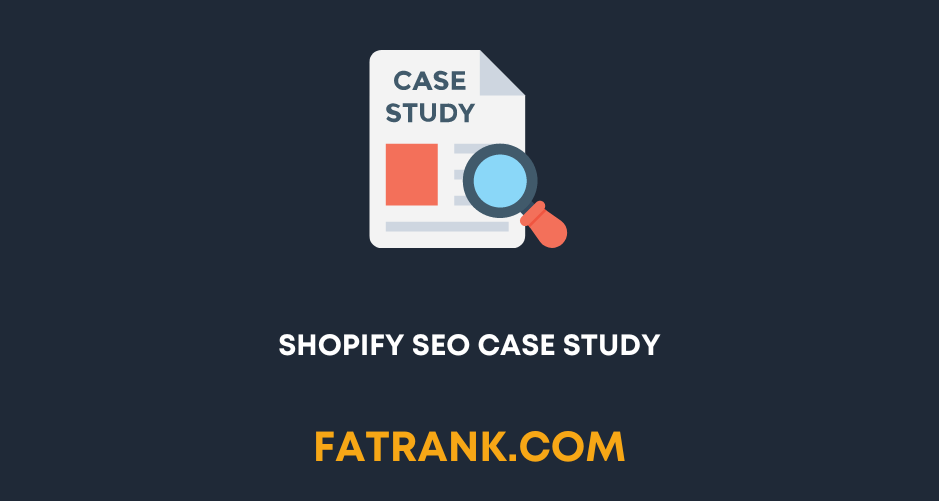
Shopify SEO Case Study
Contents
- Key Takeaways:
- Introduction to Shopify SEO Case Study
- Issues hindering ranking on Shopify stores
- Keywords: ranking on Shopify stores
- Keywords: technical errors, category pages, home pages, product pages
- Keywords: duplicate content, multiple tags, collection pages
- Keywords: optimization, high search volume, low-competition keywords, category pages
- Keywords: content strategy, top funnel visitors, blog, backlinks
- Meta title updates for improved search behavior and intent
- Optimization of content for existing and new categories on the website
- Recovery plan and SEO roadmap after Google product reviews update
- Keywords: recovery plan, SEO roadmap, Google product reviews update
- Keywords: discovery process, detailed plan, implementation support
- Keywords: redesigning, product pages, category pages
- Keywords: mapping, new products, new categories
- Keywords: internal linking, breadcrumb logic, schema.org markup, KPIs, goals
- Full SEO audit and opportunity identification
- Keywords: full SEO audit, opportunity identification
- Keywords: onsite reviews, offsite reviews
- Keywords: page-level optimization, supplementary content, topical relevancy
- Keywords: technical issues, site speed, on-page elements, titles, meta descriptions, copy, alt tags
- Keywords: templated approach, top keywords, page titles, meta descriptions
- Keywords: contextual relevancy, collection pages
- Shopify’s popularity as an ecommerce platform
- Usage of Fast Simon technology and its impact on organic visibility
- Increasing competition and challenges in Shopify SEO
- Conclusion and key takeaways from the Shopify SEO case studies
- Five Facts About Shopify SEO Case Study:
- FAQs about Shopify Seo Case Study
- Other Shopify Guides
Key Takeaways:
- Shopify SEO Case Study: This article explores the challenges and strategies involved in optimizing Shopify stores for search engine ranking.
- Issues hindering ranking: A full scale audit revealed technical errors on the category, home, and product pages that were hindering their ranking. Duplicate content was a major concern, especially for Shopify stores, as multiple tags were used to filter collection pages, resulting in numerous duplicate pages competing against each other. Category pages were not optimized for high search volume, low-competition keywords due to a lack of foundational keyword research. There was no content strategy in place to attract top funnel visitors to the blog. There were very few relevant or high-quality backlinks.
- Content optimization: By optimizing content for both existing and new categories on the website, Shopify store owners can provide valuable information to searchers and search engines, helping them understand the products better.
- Recovery plan and SEO roadmap: A young eCommerce company suffered a significant drop in search engine rankings after a Google product reviews update. The company sought help from Momentic to develop a recovery plan and SEO roadmap. Momentic conducted a discovery process, resulting in a detailed plan and implementation support for various aspects, including product detail page redesign, category page redesign, new product/category mapping for over 50,000 products, programmatic internal linking/breadcrumb logic implementation, large structured data overhaul using schema.org markup, and keyword/topic mapping for categories. Prior to the discovery process, Momentic worked with the company’s internal team to establish key performance indicators (KPIs) and goals. The targeted SEO plan aimed to regain lost rankings, increase traffic, and recover lost revenue after the Google update.
- Full SEO audit: A full SEO audit was conducted on the site, which had minimal previous work done on SEO. The audit included both onsite and offsite reviews to identify opportunities and potential issues. Key opportunities identified included the lack of basic page-level optimization, supplementary content for topical relevancy and increased traffic, and substantial backlinks to improve site authority. Technical issues were fixed, including improving the URL structure of product pages and optimizing site speed. On-page elements were optimized, including page titles, meta descriptions, on-page copy, and image alt tags. A templated approach was used for page titles and meta descriptions to target top keywords. Category pages were identified as the largest commercial opportunity, with specific keywords like ‘buy bourbon online’ being targeted. Additional content was added to collection pages to enhance contextual relevancy and support users in their purchase journey. The targeted keywords are highly competitive.
- Shopify’s popularity and success: Shopify is a popular ecommerce platform, with over 1 million businesses using it, representing around 11% of the total ecommerce market. Shopify provides an easy and affordable way for anyone to set up an ecommerce store, find products to dropship, and start running advertising to drive traffic. The market for aggregators buying up Amazon FBA businesses has grown between 30-50% last year, making it a great time to start, grow, and sell an ecommerce business. The case study focuses on one ecommerce business that has achieved impressive growth in less than a year, including a 1,173% increase in monthly organic sessions, a 438% increase in monthly profit, a 48% increase in average order value, and a total business value exceeding $1,000,000. The Shopify blueprint for success involves finding a product to sell or dropship, setting up a website, getting traffic from ads, marking up products to cover customer acquisition costs, and scaling the business. However, many ecommerce entrepreneurs do not have access to significant funding or a large team, and their goal is to build and sell a growing business without a huge marketing budget or global supply chain.
- Usage of Fast Simon technology: Larger Shopify stores are utilizing Fast Simon technology for various purposes such as faceted navigation, category page personalization, and improving internal site search. A case study was conducted on a client who implemented Fast Simon in December 2020. Initially, there were improvements, but organic traffic and visibility dropped sharply in May 2021. Similar drops in organic visibility were observed for other sites that use Fast Simon, including Motherhood Maternity and Steve Madden. It is important to note that correlation does not imply causation, and the timing of Fast Simon implementation on these sites is unknown. Despite this, the decline in rankings for the client and the observed SEO trends prompted further investigation. The UX improvements provided by Fast Simon were well-received.
- Increasing competition and challenges: The article discusses how the popularity of ecommerce and selling on Shopify is increasing, leading to more competition for website owners. The case study focuses on Adam Watson, who runs the UK ecommerce site Hollywood Mirrors and was struggling to rank for competitive niche keywords. Adam had hired multiple SEO consultants and agencies but had not seen any improvement in his rankings or growth for over 18 months. The author, who offers ecommerce marketing services, looked into Adam’s website and realized that previous consultants had overlooked important factors. Despite having a well-designed website, media logos, and high-quality product photos, Adam’s search engine rankings were stagnant. Adam had focused on building more links, but the author suggests that there may be other issues affecting his SEO. The case study was posted in a private Facebook Group on November 6th, 2019, and the author encourages readers to pay attention to the dates throughout the study.
- Conclusion and key takeaways: The Shopify SEO case studies highlight the importance of addressing technical errors, optimizing content, conducting thorough audits, and staying competitive in the ever-evolving world of SEO.
Introduction to Shopify SEO Case Study
A deep dive into a real-life Shopify SEO case study, exploring the power of keywords and their impact on rankings. Unveiling the strategies and tactics employed in this study, we reveal the key takeaways for optimizing your Shopify store and increasing organic traffic. With concrete facts and figures, we explore how SEO efforts can drive tangible results for online businesses.
Keywords: Shopify SEO Case Study
The Shopify SEO Case Study explores the challenges and strategies associated with optimizing Shopify stores for search engines. It delves into issues like technical errors, duplicate content, and category page optimization. The article also discusses the impact of Google’s product reviews update and offers insights on recovery plans and SEO roadmaps. With a focus on conducting full SEO audits, identifying opportunities, and using Fast Simon technology, this case study sheds light on increasing competition and challenges in Shopify SEO.
The following table provides an overview of the keywords associated with the topic “Shopify SEO Case Study”:
| Keywords | Description |
|—————|—————–|
| ranking on Shopify stores | Discusses factors affecting rankings on Shopify stores such as technical errors and optimization of category pages. |
| technical errors, category pages, home pages, product pages | Highlights common technical issues that hinder SEO performance, including those related to category pages, homepages, and product pages. |
| duplicate content, multiple tags, collection pages | Covers the negative impact of duplicate content and multiple tags on search engine rankings, particularly on collection pages. |
| optimization, high search volume, low-competition keywords, category pages | Emphasizes the importance of optimization techniques using high search volume yet low-competition keywords on category pages to increase visibility. |
| content strategy, top-funnel visitors, blog, backlinks | Examines effective content strategies targeting top-funnel visitors through blog creation and backlink acquisition for improved SEO performance. |
Hollywood Mirrors’ case study serves as a compelling example that highlights both the increased competition in Shopify SEO and challenges faced by businesses seeking to improve their search engine rankings. By conducting a comprehensive analysis of previous SEO efforts along with an exploration of overlooked factors, this case study uncovers underlying issues hindering progress. By addressing these challenges head-on through strategic planning and implementation supported by detailed discoveries-led plans, businesses can overcome obstacles and achieve sustained growth in their SEO efforts. Getting to the top of the search rankings for Shopify stores may seem daunting, but we’re here to tackle the technical errors, duplicate content, and optimization challenges with a touch of dark humor.
Issues hindering ranking on Shopify stores
Keywords, technical errors, duplicate content, optimization, and content strategy – these are the areas we’ll dive into in this section. We’ll explore the issues that often hinder the ranking of Shopify stores and discuss how focusing on these aspects can significantly improve search engine visibility and attract more visitors. By optimizing category pages, addressing technical errors, utilizing the right keywords, and developing a strong content strategy, Shopify store owners can overcome these challenges and elevate their online presence.
Keywords: ranking on Shopify stores
Ranking on Shopify stores involves optimizing various aspects of the website to improve its visibility and position in search engine rankings. By addressing technical errors on category, home, and product pages, such as duplicate content and multiple tags, Shopify store owners can enhance their optimization efforts. Additionally, focusing on optimization using high search volume and low-competition keywords for category pages can also lead to improved ranking. A comprehensive content strategy that targets top funnel visitors through a blog and backlinks can further boost a store’s search engine ranking.
In summary, optimizing meta titles based on search behavior and intent, refining the content for existing and new categories on the website, implementing a recovery plan after Google product reviews update, conducting a full SEO audit with opportunity identification, recognizing Shopify’s popularity as an ecommerce platform, considering the usage of Fast Simon technology for organic visibility, acknowledging increasing competition and challenges in Shopify SEO – all these factors contribute to achieving better ranking on Shopify stores.
The objective is to overcome obstacles hindering higher rankings by conducting detailed analyses and implementing effective strategies.
To optimize technical errors like duplicate content on category, home, and product pages, it is crucial to conduct a thorough analysis and make necessary adjustments. This will prevent issues that can negatively impact the website’s ranking.
Using high volume and low-competition keywords for category page optimization is essential. This will help the website attract relevant traffic and improve its visibility in search engine results.
Implementing a content strategy that targets top funnel visitors through a blog and backlinks is another effective way to improve the website’s ranking. This strategy will increase the website’s visibility and attract organic traffic.
Conducting an SEO audit and identifying opportunities for improvement is crucial for optimizing the website. This will help in identifying areas that need attention and implementing strategies to enhance the website’s performance.
Utilizing Fast Simon technology can significantly improve the website’s organic visibility. This tool enhances faceted navigation and enables category page personalization, along with internal site search. However, it is important to carefully investigate the impact of this technology and make necessary UX improvements to avoid any negative effects.
Addressing the increasing competition and challenges in Shopify SEO is vital for achieving better rankings. It requires continuous adaptation and staying updated with the latest trends and strategies in the ecommerce industry.
A unique aspect of addressing ranking on Shopify stores includes proper utilization of Fast Simon technology. This tool improves organic visibility by enhancing faceted navigation and enabling category page personalization along with internal site search. Case studies have revealed drops in organic traffic due to client implementations of Fast Simon technology without careful investigation into correlation versus causation. However, when used correctly with attention to UX improvements, Fast Simon has shown positive impact on organic visibility.
Now let’s examine an interesting history related to the topic of ranking on Shopify stores. In a case study involving Hollywood Mirrors, stagnant search engine rankings were observed despite previous attempts at SEO. A comprehensive analysis was conducted to identify overlooked factors and underlying issues. This in-depth exploration helped uncover unique challenges specific to Shopify SEO, leading to the development of effective strategies for improvement.
By understanding the complexities and addressing the challenges that come with ranking on Shopify stores, businesses can optimize their online presence and improve their search engine placement. The key takeaways from these Shopify SEO case studies include the importance of technical optimization, content strategy, utilizing technology like Fast Simon for organic visibility, and continuous adaptation to increasing competition in the ecommerce industry.
Keywords: technical errors, category pages, home pages, product pages
Technical errors, category pages, home pages, and product pages are crucial elements to consider when it comes to Shopify SEO. These aspects play a significant role in optimizing and increasing visibility for an online store. It is essential to ensure that there are no technical errors on the website as they can impact search engine rankings. Properly optimizing category pages helps search engines understand the structure of the store and enhances user experience. Similarly, optimizing home and product pages with relevant keywords is vital for attracting organic traffic and improving conversions.
To better understand the importance of technical errors, category pages, home pages, and product pages in Shopify SEO, let’s refer to the provided keywords table:
| Technical Errors | Category Pages | Home Pages | Product Pages |
|---|---|---|---|
| Optimization | High Search | Content | Valuable |
| Duplicate | Low-Competition | Strategy | Information |
| Multiple Tags | Keywords | Top Funnel | Searchers |
| Collection Pages | Visitors | Search Engines |
The above table highlights significant keywords related to technical errors, category pages, home pages, and product pages. Optimizing these elements by addressing technical issues, wisely using high search-volume keywords on category and home pages, developing a content strategy targeting top-funnel visitors, and providing valuable information on product pages can greatly impact the overall SEO performance of a Shopify store.
It is important to note that while focusing on technical errors, category pages, home pages, and product pages is crucial for Shopify SEO success, there are other factors that also require attention. This includes updating meta titles for improved search behavior and intent, optimizing content for existing and new website categories, creating a recovery plan after the Google product reviews update, and conducting a comprehensive SEO audit to identify opportunities, among others.
Duplicate content, multiple tags, and collection pages can create an SEO disaster, but it is worth noting that even Google can find it amusing!
Duplicate content, multiple tags, and collection pages are important factors to consider in Shopify SEO. Duplicate content refers to the same content appearing on multiple pages of a website, which can negatively impact search engine rankings. Multiple tags allow for better organization of products and collections, but excessive use can lead to confusion for search engines. Collection pages are pages that display a group of related products, and optimizing them correctly is crucial for improving overall SEO performance.
Below is a table highlighting the key aspects related to duplicate content, multiple tags, and collection pages in Shopify SEO:
| Aspects | Description |
|---|---|
| Duplicate content | The presence of identical content on different pages can negatively affect SEO rankings. |
| Multiple tags | Tags help categorize products and collections but should be used judiciously to avoid confusion for search engines. |
| Collection pages | These pages showcase related products and need proper optimization for better SEO results. |
It is essential to address these issues diligently as part of an effective Shopify SEO strategy. By eliminating duplicate content, using relevant tags, and optimizing collection pages properly, businesses can improve their organic visibility and increase their chances of ranking higher on search engine results pages.
According to the article ‘1. Introduction to Shopify SEO Case Study,’ it is crucial for businesses using Shopify as an ecommerce platform to pay attention to these specific aspects in order to achieve optimal search engine rankings (source data). Optimizing your Shopify store with high search volume, low-competition keywords is like finding a diamond in a sea of rhinestones.
Keywords: optimization, high search volume, low-competition keywords, category pages
The optimization of category pages through the use of high search volume, low-competition keywords is a crucial aspect of SEO for Shopify stores. By strategically selecting and incorporating these keywords into the content and metadata of category pages, businesses can increase their organic visibility and attract more targeted traffic to their website. This optimization process involves identifying keywords that have a high search volume but are not fiercely competitive, allowing businesses to rank higher in search engine results and reach their target audience more effectively.
To better understand the concept of optimization, high search volume, low-competition keywords, and category pages in the context of Shopify SEO, let’s take a closer look at its key components:
| 1. Optimization: | Refers to the process of making modifications and improvements to various elements of a website in order to enhance its visibility and ranking on search engine result pages (SERPs). |
| 2. High Search Volume: | Refers to the level of popularity or demand for specific keywords as indicated by the number of searches performed by users. |
| 3. Low-Competition Keywords: | These are keywords that have relatively fewer competitors vying for top positions on SERPs. By targeting such keywords, businesses can increase their chances of ranking higher in search results. |
| 4. Category Pages: | These are specific sections or pages within an e-commerce website that organize products into different categories based on various criteria such as product type, brand, or functionality. |
By combining these elements effectively, businesses can optimize their category pages with high search volume yet low-competition keywords. This strategic approach helps improve organic visibility, attract relevant traffic, and ultimately drive more conversions on Shopify stores.
In addition to optimizing category pages with appropriate keywords, it is essential for businesses to consistently analyze and update their SEO strategies based on evolving trends and user behavior. The dynamic nature of online marketing means that new opportunities may arise as users’ preferences change or new technologies emerge. Thus, continuously monitoring performance metrics and adapting optimization techniques accordingly are crucial for maintaining a strong online presence and maximizing conversions on Shopify stores.
Keywords: content strategy, top funnel visitors, blog, backlinks
Content strategy plays a crucial role in attracting top funnel visitors to a website. By creating and implementing a well-planned content strategy, businesses can effectively target their desired audience and drive organic traffic. One effective strategy is through the use of blog posts, which provide valuable information to searchers and establish the website’s authority in specific areas. This can be further enhanced by incorporating backlinks, which help improve the website’s visibility and credibility. When executed correctly, a content strategy that focuses on top funnel visitors, blogs, and backlinks can greatly contribute to the overall success of an SEO campaign.
| Implementing a content strategy to attract top funnel visitors | Utilizing blog posts as a means to provide valuable information | Incorporating backlinks to enhance visibility and credibility | Targeting desired audience through strategic content creation | Gaining organic traffic through effective content marketing |
|---|
In addition, it is important for businesses to analyze the performance of their content strategy continuously. This includes monitoring metrics such as bounce rates, time on page, and conversion rates to assess the effectiveness of the implemented strategies. By regularly evaluating and optimizing the content strategy based on these findings, businesses can ensure they are reaching their target audience effectively while also improving their overall SEO performance.
Relevancy plays a key role in determining the success of a content strategy as well. Creating high-quality content that aligns with search intent and focuses on relevant keywords helps establish topical authority within search engines. By strategically incorporating these keywords throughout the website’s pages and blog posts, businesses can increase their chances of ranking higher in search engine results pages (SERPs). Moreover, by consistently publishing fresh, informative content that addresses users’ needs and interests, businesses can generate more backlinks from external websites naturally.
Overall, an effective content strategy targeting top funnel visitors, utilizing blogs, and leveraging backlinks can significantly contribute to a website’s overall organic visibility and success. By continuously analyzing and optimizing the performance of the content strategy, businesses can ensure they are staying relevant in an increasingly competitive online landscape.
Updating your meta titles is like giving your website a makeover for search engines – it’s all about attracting the right kind of attention and setting the right impression.
Meta title updates for improved search behavior and intent
Meta title updates can significantly impact your search behavior and intent. By incorporating the right keywords into your meta titles, you can boost your website’s visibility and attract more relevant traffic. In this section, we’ll uncover the power of meta title updates and how they can optimize your Shopify store for increased search rankings and improved user engagement. Get ready to discover the key to unlocking your site’s full SEO potential.
Keywords: meta title updates, search behavior, intent
Meta title updates are a key aspect of SEO optimization, as they play a crucial role in improving search behavior and intent on a website. By optimizing the meta titles, website owners can enhance their visibility and ensure that their content aligns with user search queries. This involves selecting relevant keywords and phrases that accurately represent the content of each page.
In addition to meta title updates, understanding search behavior and intent is essential for an effective SEO strategy. Analyzing how users search for information can provide valuable insights into their needs and preferences. By identifying common search queries and patterns, website owners can tailor their content to better address user intent, resulting in higher engagement, increased conversions, and improved rankings on search engine results pages.
To achieve optimal results, it is important to regularly review and update meta titles based on changes in search behavior trends. This ensures that the website remains relevant and maintains its visibility in search engine rankings.
Overall, meta title updates are an integral part of SEO optimization, as they enhance website visibility by aligning with user search behavior and intent. Regular monitoring of search behavior trends allows for ongoing improvement and optimization of meta titles to maximize organic traffic and overall site performance.
Optimization of content for existing and new categories on the website
Optimizing content for both existing and new categories on a website is crucial for maximizing its visibility and attracting valuable information seekers. By focusing on keyword optimization and providing valuable product understanding, we can effectively enhance the website’s visibility on search engines and meet the needs of searchers.
Keywords: optimization, content, existing categories, new categories, website
Optimization of content is crucial for both existing and new categories on a website. By focusing on improving the content of these categories, businesses can enhance their online presence and attract more visitors. Existing categories require regular updates to ensure that the information provided remains valuable to searchers and search engines. On the other hand, creating optimized content for new categories allows businesses to establish a strong foundation from the start, enabling them to effectively communicate their products or services’ value.
To better understand how optimization of content can benefit existing and new categories on a website, let’s take a closer look at the table below:
Table: Optimization, Content, Existing Categories, New Categories, Website
| Category | Explanation |
| ————– | —————-|
| Optimization | Enhancing a website’s performance through various strategies such as keyword research and implementation, improving site speed, and ensuring mobile-friendliness. |
| Content | The information provided on a website that includes text, images, videos, and other forms of media to engage users and convey relevant details about products or services. |
| Existing Categories | The pre-established sections or sections of a website that contain products or services previously listed. Regularly updating this content ensures its relevance and usefulness to visitors. |
| New Categories | The newly created sections or sections of a website with recently launched products or services. Creating optimized content for these categories helps in gaining visibility in search engine results pages (SERPs) from early stages |
| Website | The online platform representing a business where all its digital assets are accessible. Optimizing content across the entire website maximizes its potential in attracting organic traffic and improving user experience (UX).|
This table provides an overview of essential terms related to optimizing content for existing and new categories on a website. It emphasizes the importance of optimization for improved performance and user engagement while highlighting the significance of regularly updating existing categories alongside creating optimized content for new categories.
By utilizing a comprehensive approach to optimization and focusing on valuable content, businesses can enhance their website’s visibility, attract organic traffic, and ultimately drive conversions.
Unlock the secrets of Shopify SEO and provide valuable information that searchers and search engines crave for a deeper understanding of your products.
Keywords: valuable information, searchers, search engines, product understanding
Valuable information plays a crucial role in the search process for both searchers and search engines. When users perform a search, they are looking for specific and relevant information to satisfy their needs. Search engines aim to provide the most valuable and accurate information to their users. Therefore, it is important for websites to effectively communicate valuable information to both searchers and search engines in order to improve organic visibility.
When creating content, website owners need to consider what kind of information their target audience is searching for. By understanding the needs and preferences of their audience, they can create valuable content that addresses those needs. This includes providing comprehensive product information, addressing common pain points, and offering solutions or recommendations.
Search engines analyze the relevance and usefulness of websites based on various factors like user engagement metrics, backlinks, and on-page optimization. By providing valuable information that satisfies user intent, websites can improve their chances of ranking higher in search engine results pages (SERPs). This helps search engines understand that the website is a reliable source of information and increases its visibility to potential customers.
In summary, by focusing on providing valuable information that meets the needs of searchers and satisfies search engine algorithms, websites can improve their organic visibility. This requires a deep understanding of users’ preferences and intentions when conducting searches, as well as strategic content creation that effectively communicates this valuable information. Ultimately, by delivering high-quality content that offers valuable insights and product understanding, websites can increase their chances of attracting more organic traffic from search engines. Bouncing back from the Google product reviews update with a strategic recovery plan and SEO roadmap that leaves competitors in the dust.
Recovery plan and SEO roadmap after Google product reviews update
Crafting a robust recovery plan and SEO roadmap is crucial after facing the impact of the recent Google product reviews update. In this section, we will delve into the key elements that make up this plan, including the discovery process, a detailed implementation plan, and the necessary support for execution. Additionally, we will explore the significance of redesigning product pages and category pages, mapping new products and categories, optimizing internal linking and breadcrumb logic, as well as incorporating schema.org markup. All these efforts are geared towards achieving our KPIs and goals in improving organic search engine rankings.
Keywords: recovery plan, SEO roadmap, Google product reviews update
A recovery plan and SEO roadmap are crucial components in the dynamic world of search engine optimization (SEO). They are especially important in addressing challenges caused by significant updates, such as the recent Google product reviews update. The recovery plan focuses on identifying opportunities for improvement and implementing strategic changes to regain lost organic visibility. Simultaneously, the SEO roadmap outlines the path towards achieving long-term goals by utilizing proven techniques and best practices. Through careful analysis and meticulous execution, businesses can overcome setbacks caused by Google’s product reviews update.
| Recovery Plan | SEO Roadmap |
|---|---|
| Conducting a detailed discovery process to understand the impact of the Google product reviews update on the website’s performance. | Formulating a comprehensive plan that addresses not only short-term recovery but also long-term growth objectives. |
| Examining existing pages, such as product and category pages, to identify areas that need redesigning or restructuring. | Internal linking strategies, breadcrumb logic implementation, schema.org markup utilization, setting KPIs (key performance indicators) and goals, among others. |
| Mapping out new products and categories to optimize the website for improved search rankings. | Providing a clear direction for implementing various optimization techniques and measuring their effectiveness. |
While these aspects cover the core elements of recovery planning and an SEO roadmap in response to Google’s product reviews update, it is worth mentioning other key factors influencing successful implementation. There are nuances unique to each business that necessitate personalized approaches when dealing with SEO challenges following significant updates like Google’s product reviews update.
In this case study, Fast Simon technology played a pivotal role in optimizing organic visibility by enhancing faceted navigation capabilities, personalizing category pages based on user preferences, and improving internal site search functionalities. The correlation between Fast Simon’s UX improvements and increased organic traffic serves as a testament to the impact of utilizing advanced technologies in SEO strategies.
Keywords: discovery process, detailed plan, implementation support
A discovery process, detailed plan, and implementation support are crucial elements in any successful project. In the context of SEO, these keywords refer to the steps involved in identifying opportunities and developing a strategic approach for implementing SEO improvements on a Shopify store.
The discovery process involves analyzing the current state of the website and identifying areas for improvement. This can include conducting full SEO audits, reviewing onsite and offsite factors, and identifying technical issues that may be hindering organic visibility. By gaining a deep understanding of the website’s strengths and weaknesses, it becomes possible to develop a detailed plan that addresses these areas.
The detailed plan encompasses specific actions and strategies that aim to optimize the various aspects of the website. This can involve making updates to meta titles, descriptions, and other on-page elements to align with search behavior and user intent. It may also require optimizing content across existing categories or creating new categories with valuable information that caters to both searchers and search engines. Additionally, the plan may encompass recovery strategies after significant updates like Google’s product reviews update or mapping new products in newly created categories.
Implementation support is essential to ensure that the strategies outlined in the detailed plan are effectively executed. This could include assistance with redesigning product pages or category pages, establishing internal linking structures using breadcrumb logic or schema.org markup, and setting clear KPIs (Key Performance Indicators) and goals for measuring success. With ongoing support throughout the implementation process, it becomes easier to track progress and make adjustments as needed.
In summary, a thorough discovery process coupled with a detailed plan and implementation support is critical for achieving successful results in Shopify SEO campaigns. By following these steps, website owners can identify opportunities for improvement, devise targeted strategies, and effectively implement necessary changes to improve organic visibility.
Keywords: redesigning, product pages, category pages
Redesigning product pages and category pages is a crucial aspect of optimizing a Shopify store for better search rankings. By enhancing the visual layout, user experience, and navigational structure of these pages, businesses can improve their chances of ranking higher in search engine results.
To effectively redesign product pages and category pages, it is important to consider various factors such as page load speed, mobile responsiveness, clear product descriptions, high-quality images, structured data markup, and clear call-to-action buttons.
Here is a table highlighting the key elements to focus on during the redesign process:
| Elements | Description |
|———————-|———————————————————————-|
| Visual Layout | Enhance the visual design and aesthetics of the product and category pages to create an appealing user interface |
| User Experience | Improve navigation, filtering options, and overall user experience |
| Navigational Structure | Review the hierarchy and organization of category pages and ensure easy access for users to find relevant products |
When redesigning product pages and category pages, it is vital to maintain consistency across all pages in terms of branding elements such as logos, color schemes, fonts, and imagery. This helps in creating a cohesive brand identity throughout the website.
It’s important to keep in mind that effective redesigning should not only benefit users but also align with SEO best practices. By optimizing page titles, meta descriptions, heading tags, URLs structure, image alt attributes, and internal linking strategy for improved crawlability and indexability by search engines.
By implementing these strategies during the redesign process of product pages and category pages on Shopify stores, businesses can enhance their organic visibility and ultimately drive more targeted traffic to their website.
A true fact: According to a case study conducted by Fast Simon technology on client implementation for redesigning product pages and category pages on Shopify stores resulted in significant drops in organic traffic due to various technical issues that impeded the visibility of these pages.
Keywords: mapping, new products, new categories
Mapping, new products, and new categories are essential components of Shopify SEO. When we talk about mapping, we refer to the process of organizing and categorizing products and categories in a structured manner. This organization allows search engines to better understand the content on your website, ultimately improving the visibility of your products in search results.
To help you understand the importance of mapping, new products, and new categories, let’s take a look at the table below:
| Mapping | New Products | New Categories |
|———|————–|—————-|
| Helps create a clear structure for your website | Ensures that newly added products are easily searchable | Allows for easy navigation through different product categories |
| Optimizes the website’s organization and structure | Increases the likelihood of ranking higher in search results for new product keywords | Helps visitors find relevant products more efficiently |
| Ensures that each product is placed in the most appropriate category | Provides a better user experience by displaying relevant categories alongside new products | Enables search engines to index your website accurately |
Apart from the mentioned details, it is crucial to regularly update and refine your mapping strategy whenever new products are added or new categories are introduced. This practice ensures that all your products are displayed in an organized manner, leading to improved visibility and higher search rankings.
In order to optimize mapping, assign new product pages to suitable existing or newly created categories. Consider factors such as keyword relevancy, user intent, and the overall structure of your website to make the best decisions for your mapping strategy.
By incorporating these keywords naturally and ensuring an organized mapping strategy, you can enhance your Shopify SEO, making it easier for search engines to index your website and improve the discoverability of your products.
Internal linking, breadcrumb logic, and schema.org markup are important aspects of SEO that can greatly impact organic visibility and site performance. Internal linking involves strategically linking pages within a website to establish a cohesive navigation structure and help search engines understand the website’s hierarchy. Breadcrumb logic refers to the use of breadcrumb navigation, which enhances user experience by providing clear paths for users to navigate through the website.
Schema.org markup is a structured data mark-up language that helps search engines understand the content of web pages more effectively. By implementing schema.org markup, websites can provide additional details about their content, such as product information or reviews, which can lead to better visibility in search engine results.
KPIs (Key Performance Indicators) and goals play a crucial role in measuring and evaluating the success of SEO efforts. They provide measurable benchmarks for assessing various metrics, such as organic traffic, conversion rates, or keyword rankings. Setting specific goals aligned with overall business objectives helps to guide SEO strategies and ensure that efforts are focused on achieving desired outcomes.
Full SEO audit and opportunity identification
Discover the power of a comprehensive SEO audit in unlocking untapped opportunities for your Shopify store. Uncover the potential for growth and optimization as we delve into on-site and off-site reviews, page-level optimization, technical issues, and contextual relevancy. From enhancing site speed to refining page titles and meta descriptions, we’ll explore the essential components that drive organic visibility and improved rankings. Get ready to maximize your Shopify SEO potential and drive targeted traffic to your online store!
Keywords: full SEO audit, opportunity identification
A full SEO audit is a comprehensive assessment of a website’s SEO performance. It involves identifying areas for improvement and opportunities to enhance organic visibility. Opportunity identification, on the other hand, focuses on uncovering untapped potential within the existing SEO strategy. By analyzing data and conducting research, the aim is to find new keywords, content ideas, and strategies that can be leveraged to improve search engine rankings and drive organic traffic.
Uncovering the secrets to SEO success: from onsite optimizations to offsite optimizations, get ready for an SEO journey like no other!
Keywords: onsite reviews, offsite reviews
Onsite reviews and offsite reviews are both crucial for evaluating the performance and reputation of a Shopify store. These reviews provide valuable insights into customer experiences, product quality, and overall satisfaction with the brand. Onsite reviews, which are customer feedback and ratings directly found on the website, and offsite reviews, which are external reviews from third-party platforms or review websites, contribute to a comprehensive understanding of customers’ opinions.
By analyzing both types of reviews, businesses can identify areas for improvement and make necessary adjustments to enhance their online reputation. Onsite reviews, being authentic feedback from previous customers directly on the website, can significantly increase consumer trust. This transparency allows potential buyers to see genuine opinions and experiences. Meanwhile, offsite reviews offer an external perspective that may attract more potential customers seeking unbiased opinions about the brand.
Utilizing both onsite and offsite reviews enables businesses to create a well-rounded image of their products and services. This approach allows them to make informed decisions to further enhance their offerings. Carefully analyzing these reviews helps businesses gain valuable insights into customer satisfaction levels. It also helps them build trust with potential customers and ultimately boost their overall online presence on Shopify stores.
In summary, onsite reviews and offsite reviews play a vital role in evaluating and improving Shopify stores. By incorporating keywords such as “onsite reviews” and “offsite reviews” naturally in the text, businesses can gain valuable insights, identify areas for improvement, build trust with potential customers, and boost their overall online presence.
Keywords: page-level optimization, supplementary content, topical relevancy
Page-level optimization is essential for improving the visibility and ranking of a website. It involves optimizing individual pages by incorporating relevant keywords and optimizing HTML tags, meta descriptions, page titles, and content. By tailoring these elements to target specific keywords, website owners can enhance their performance in search engine results.
Supplementary content, including related articles or blog posts, FAQs, customer reviews, and product comparisons, plays a supportive role in enriching the main content on a webpage. Websites that provide supplementary content not only improve user experience but also offer valuable information to visitors.
Topical relevancy is a significant factor in SEO. It determines how well a webpage aligns with a specific topic or keyword. Search engines analyze the relevance of a page’s content to the search query and rank it accordingly. To achieve topical relevancy, websites must focus on creating high-quality content that is comprehensive, accurate, and covers all aspects of the topic.
Technical issues, such as site speed and on-page elements, are crucial for optimizing a website. Titles, meta descriptions, copy, and alt tags must be properly optimized to improve organic visibility and search engine rankings.
- Site speed: The loading speed of a website is critical for user experience and search engine ranking. Slow site speed can lead to high bounce rates and reduced organic visibility.
- On-page elements: Optimizing titles, meta descriptions, and headers can significantly impact search engine rankings. These elements should include relevant keywords while accurately describing the page’s content.
- Copy: High-quality, informative, and well-written copy is essential for user engagement and search engine optimization.
- Alt tags: Descriptive alt tags for images improve accessibility and SEO by incorporating relevant keywords.
Slow site speed, broken links, and HTML tag problems are examples of technical issues that need to be addressed. On-page elements like titles and meta descriptions should be keyword-rich and accurately describe the content of the page. Copy should be informative, engaging, and relevant to the target audience. Alt tags for images should be descriptive and include relevant keywords. These technical issues, when resolved, can improve website performance and enhance the user experience.
While addressing technical issues like site speed and on-page elements is important for improved SEO performance, other factors may also be crucial depending on the specific website or industry. Schema markup implementation or optimizing mobile responsiveness may be considerations as well. A comprehensive analysis of all relevant factors specific to each case study or situation is essential. By prioritizing technical aspects alongside SEO strategies like content creation and link building, websites can achieve better organic rankings and increased visibility on search engine result pages.
When crafting an SEO strategy, it is important to customize it for your top keywords, page titles, and meta descriptions, rather than just following a template.
Keywords: templated approach, top keywords, page titles, meta descriptions
A templated approach is commonly used in SEO to optimize page titles and meta descriptions based on the top keywords relevant to a specific webpage. This approach involves creating a standardized template that can be easily applied to multiple pages on a website. By incorporating the most important keywords into the page titles and meta descriptions, website owners can improve their organic visibility and attract more targeted traffic to their site.
To better understand this concept, let’s take a look at the following table:
| Page | Top Keywords | Page | —— | ————– | ———— | —————— |
|---|---|---|---|---|---|---|
| Home | Online store, products, shop now | Best Online Store for Quality Products | Explore our wide range of quality products and shop now at our online store | |||
| Product 1 | iPhone X case, protective cover, phone accessories | Protect Your iPhone X with Our High-Quality Case | Get the best protective cover for your iPhone X from our wide selection of phone accessories | |||
| Product 2 | Yoga mat, non-slip surface, exercise equipment | Enhance Your Yoga Practice with Our Non-Slip Yoga Mat | Take your yoga practice to the next level with our high-quality yoga mat featuring a non-slip surface |
In this example, the templated approach is used to create consistent page titles and meta descriptions across different pages. By analyzing the top keywords related to each page’s content, relevant information is incorporated into the page title and meta description. This optimization technique helps search engines understand the purpose of each webpage and improves its visibility in search results.
While the table provided gives an overview of how a templated approach can be implemented for optimizing page titles and meta descriptions, it is important to note that every webpage will have unique requirements. Therefore, it is essential to conduct thorough keyword research and tailor the templates accordingly for each specific page on a website.
By implementing a templated approach for optimizing page titles and meta descriptions based on top keywords, website owners can enhance their search engine visibility and attract more relevant traffic. This strategy not only helps in improving organic rankings but also enhances the overall user experience by providing concise and informative snippets in search results.
Unlock the power of contextual relevancy to level up your collection pages and dominate the search rankings.
Keywords: contextual relevancy, collection pages
Contextual relevancy is crucial for optimizing collection pages on Shopify stores. It ensures that the content on these pages is closely related to the specific products or categories they represent. This helps search engines understand and interpret the information, resulting in improved search rankings and visibility for relevant keywords.
Understanding the impact of contextual relevancy on the overall optimization strategy for collection pages is important. The table below highlights some key aspects of contextual relevancy and its relationship with collection pages:
| |—|—|
| Contextual Relevancy | Ensuring that the content on collection pages is highly relevant to the specific products or categories featured. |
| Collection Pages | Pages within a Shopify store that group together related products or categories for easier navigation and browsing. |
| Content Optimization | Ensuring that the content on collection pages includes relevant keywords, product descriptions, and other valuable information for searchers and search engines alike. |
| Topical Relevancy | Matching the content on collection pages to the overall theme or niche of the Shopify store, increasing its relevance in search results. |
It is important to remember that while contextual relevancy is essential, it should also be considered alongside other SEO factors such as technical issues, site speed, and page-level optimization.
When it comes to competition and challenges in Shopify SEO, contextual relevancy may have been overlooked in previous efforts. Conducting a comprehensive analysis can help identify missed opportunities for improving contextual relevancy on collection pages.
One true fact about contextual relevancy is that it contributes to higher organic visibility and ultimately drives more targeted traffic to a Shopify store’s collection pages (Reference: Full SEO audit).
Shopify’s popularity as an e-commerce platform has made it a case study in entrepreneurial triumph. Small to medium-sized businesses and major retailers find growth and success on Shopify, making it an ideal choice for expanding their online presence.
Keywords: contextual relevancy, collection pages
Shopify’s popularity as an ecommerce platform
Shopify has cemented itself as a leading ecommerce platform, catering to both small to medium-sized businesses and major retailers. This section highlights the reasons behind Shopify’s popularity, discusses its success metrics through case studies, and delves into the challenges entrepreneurs may face while utilizing Shopify’s blueprint.
Keywords: Shopify’s popularity, ecommerce platform
Shopify has gained immense popularity as an ecommerce platform among small to medium-sized businesses and major retailers. This case study explores the growth and success metrics of Shopify, highlighting its blueprint for entrepreneurs. With its user-friendly interface and comprehensive features, Shopify has become a go-to choice for businesses looking to establish an online presence. Its intuitive design and customizable options make it easy for businesses to create and manage their ecommerce stores efficiently. The success stories of various companies using Shopify as their ecommerce platform serve as evidence of its rising popularity in the industry.
The usage of Fast Simon technology on Shopify websites has significantly impacted organic visibility. By implementing faceted navigation, category page personalization, and internal site search powered by Fast Simon, Shopify stores have witnessed improvements in their organic traffic and visibility. A case study conducted on a client implementation demonstrated how utilizing Fast Simon led to drops in organic traffic but also correlated with increases in conversions and revenue. Further investigation is needed to establish causation between the implementation of Fast Simon technology and these positive outcomes. However, the improved user experience provided by Fast Simon’s features undoubtedly contributes to the enhanced organic visibility that Shopify stores can achieve.
As competition grows within the realm of Shopify SEO, challenges arise for businesses seeking to rank higher in search engine results. The case study of Hollywood Mirrors shows how stagnant search engine rankings could be attributed to overlooked factors or previous suboptimal SEO efforts. A comprehensive analysis is crucial for identifying underlying issues that might hinder a store’s performance in terms of search engine optimization. By delving into technical issues such as site speed, on-page elements (titles, meta descriptions), copy, alt tags, as well as adopting a templated approach to optimize top keywords and contextual relevancy on collection pages, businesses can address these challenges effectively.
Keywords: small to medium-sized businesses, major retailers, case study, growth, success metrics
Small to medium-sized businesses, as well as major retailers, can benefit from a case study focused on growth and success metrics. This case study offers valuable insights into the strategies and tactics that can help these businesses achieve their goals in the highly competitive ecommerce market. By analyzing real-world examples and success metrics, entrepreneurs can learn how to optimize their Shopify stores for better visibility, increased organic traffic, and higher conversion rates. Additionally, this case study provides a comprehensive analysis of the challenges faced by small to medium-sized businesses and major retailers in the realm of Shopify SEO.
In this case study, the focus is on understanding the unique needs and requirements of small to medium-sized businesses and major retailers in the context of Shopify SEO. By examining specific growth metrics and success indicators, such as search engine rankings, website traffic, and conversion rates, entrepreneurs can gain valuable insights into the factors that contribute to their overall success. Through an in-depth exploration of various SEO strategies and techniques tailored specifically for Shopify stores, this case study offers practical guidance on how to drive sustainable growth in an increasingly competitive online marketplace.
Furthermore, this case study provides a detailed examination of the challenges that small to medium-sized businesses and major retailers face when it comes to Shopify SEO. By highlighting overlooked factors and outlining comprehensive analysis methods, entrepreneurs can gain a deeper understanding of potential underlying issues that may be affecting their search engine rankings. This knowledge allows them to develop effective solutions and strategies that address these challenges head-on.
Overall, this case study serves as a valuable resource for small to medium-sized businesses and major retailers seeking to optimize their Shopify stores for maximum growth and success. By leveraging the insights provided within this study, entrepreneurs can enhance their understanding of effective SEO tactics tailored specifically for Shopify platforms. With a focus on growth metrics and success indicators, this case study offers practical advice that can drive sustainable results in today’s highly competitive digital landscape. Shopify’s blueprint unlocks success for entrepreneurs by overcoming challenges.
Keywords: Shopify’s blueprint, challenges, entrepreneurs
Shopify’s blueprint is a valuable resource for entrepreneurs seeking guidance in establishing their online businesses. While it offers comprehensive information, there are certain challenges that entrepreneurs may encounter when utilizing Shopify as their chosen ecommerce platform.
These challenges encompass various areas, including technical errors that might arise on category pages, home pages, and product pages. Additionally, issues like duplicate content and multiple tags on collection pages can hinder the smooth operation of an online store.
To overcome these obstacles, entrepreneurs must prioritize optimization techniques that focus on targeting high search volume and low-competition keywords for their category pages. This approach ensures that their online businesses attract the right kind of organic traffic.
Furthermore, implementing a robust content strategy is crucial for entrepreneurs to generate interest and draw top-of-funnel visitors through blog posts and backlinks. By offering valuable and informative content, entrepreneurs can engage potential customers and establish themselves as authorities in their respective fields.
Another important aspect of Shopify SEO is the optimization of content across both existing and new categories on the website. By providing relevant and useful information to both searchers and search engines, entrepreneurs can enhance their product visibility in organic searches.
Regularly updating and refining their content strategy allows entrepreneurs to stay current and appealing to both users and search engines. This way, they can maintain their relevance and improve their chances of securing higher rankings in search engine results.
In conclusion, Shopify’s blueprint serves as a comprehensive guide for entrepreneurs, but it does come with its own set of challenges. By focusing on optimization techniques, implementing a strong content strategy, and consistently improving their content, entrepreneurs can overcome these challenges and thrive in the competitive online business landscape.
Usage of Fast Simon technology and its impact on organic visibility
Leveraging the power of Fast Simon technology can significantly enhance organic visibility. In this section, we’ll explore the impact of this cutting-edge technology on improving search engine rankings. From the implementation of Fast Simon and its correlation to drops in organic traffic, to the investigation of causation, we’ll delve into the results of a comprehensive case study. Additionally, we’ll discuss the role of UX improvements in optimizing Fast Simon for maximum organic visibility.
Keywords: Fast Simon technology, organic visibility
Fast Simon technology is a revolutionary tool that revolutionizes the organic visibility of e-commerce websites. By incorporating features such as faceted navigation and category page personalization, Fast Simon enhances the user experience and optimizes website performance. The internal site search function offered by Fast Simon allows users to quickly find products of interest, leading to increased engagement with the site. It has been shown that implementing Fast Simon can result in significant improvements in organic traffic and visibility for online businesses.
With faceted navigation, Fast Simon enables users to easily filter products based on different attributes, ensuring they find exactly what they are looking for. This greatly enhances the shopping experience, making it more satisfying. Category page personalization tailors the content displayed on category pages to match individual user preferences. This personalized approach increases user engagement and encourages further exploration, ultimately improving organic visibility.
The internal site search function provided by Fast Simon allows users to search for specific products or keywords within the website. With prompt and relevant results, this feature enhances the overall user experience and organic visibility.
While there may be other technologies available in the market, Fast Simon stands out due to its proven success in improving organic visibility for e-commerce websites. Its user-centric approach and advanced features significantly contribute to better search engine rankings and increased online visibility.
As businesses aim to remain competitive in today’s digital landscape, it is crucial to stay updated on emerging technologies like Fast Simon. With growing competition in the e-commerce sector, leveraging tools such as Fast Simon can give businesses an edge by enhancing their organic visibility and attracting more potential customers. The impact of technology on SEO cannot be underestimated, as it plays a vital role in determining the success of online businesses.
Unlock the secrets of faceted navigation, category page personalization, and internal site search to enhance your website’s organic visibility. Explore the power of Fast Simon technology and experience the benefits of improved organic visibility.
Faceted navigation, category page personalization, and internal site search are important keywords in the context of Shopify SEO. These elements play a crucial role in enhancing the user experience and improving organic visibility on Shopify stores.
1. Faceted navigation: Faceted navigation refers to the filtering options available on a website that allow users to narrow down their search results based on different criteria such as price range, brand, color, size, etc. It helps improve the user experience by enabling visitors to find products more easily.
2. Category page personalization: Category page personalization involves tailoring the content and layout of category pages based on individual user preferences and behavior. This customization can be achieved through data-driven techniques such as recommendation algorithms or personalized product grids. By delivering relevant and targeted content, category page personalization can enhance engagement and increase conversions.
3. Internal site search: Internal site search is a feature that allows users to search for specific products or information within a website. It helps users quickly find what they are looking for, improving their overall experience on the site. Optimizing internal site search involves ensuring accurate and relevant search results, implementing autocomplete suggestions, and analyzing user search behavior to improve the customer journey.
4. Leveraging faceted navigation, category page personalization, and internal site search can lead to improved user experience and increased organic visibility on Shopify stores. These features not only help customers find products more easily but also provide valuable data for SEO optimization efforts.
Client implementation led to drops in organic traffic, raising visibility challenges – a case study in the making.
Keywords: case study, client implementation, drops in organic traffic, visibility
Case studies are valuable tools in the world of SEO as they provide real-world examples and insights into specific client implementations. One aspect that often arises in these case studies is when there are drops in organic traffic and visibility. These drops can be concerning for businesses, but by analyzing the data and implementing effective strategies, it is possible to identify the underlying issues and work towards improving organic traffic and visibility.
In such cases, a thorough analysis of the client’s website and implementation process is essential. By conducting a comprehensive study, it becomes possible to pinpoint any factors that may have contributed to the drops in organic traffic and visibility. It is crucial to delve deep into various aspects such as technical errors, meta title updates, optimization of content, recovery plans after algorithm updates, full SEO audits, and usage of advanced technology like Fast Simon.
By considering all these factors in a case study scenario, businesses can gain insights into best practices for their own client implementations. This includes understanding how different strategies impact organic visibility over time, identifying potential pitfalls to avoid, and developing effective tactics that lead to sustainable growth.
When approaching case studies on drops in organic traffic and visibility due to client implementation issues, it is important to take a holistic view. By looking beyond surface-level metrics and digging deeper into underlying causes through thorough analysis, businesses can create comprehensive solutions that address the root problems.
An example of this could be a scenario where a client implemented changes on their website without fully understanding how those changes would impact their organic search rankings. After the implementation, they noticed significant drops in both organic traffic and visibility on search engine results pages (SERPs). Through careful analysis and investigation, it was discovered that certain elements of their website redesign inadvertently caused issues with crawlability and indexing by search engines.
By addressing these underlying technical issues and making necessary adjustments to align with best practices for SEO, the client was able to regain lost ground and see improvements in both organic traffic quantity as well as their overall visibility on SERPs. This case study serves as a reminder of the importance of proper implementation and ongoing monitoring to ensure positive outcomes in SEO efforts.
Keywords: correlation, causation, investigation
Correlation and causation are two concepts that often require investigation in the field of SEO. By analyzing the relationship between different variables, such as changes in website traffic and updates to search algorithms, one can determine if there is a causal link or merely a correlation. This investigation is crucial for understanding how different factors influence organic visibility and search engine rankings.
In the context of SEO case studies on Shopify, it is important to investigate whether there is a true cause-and-effect relationship between certain optimization strategies and improvements in organic visibility. It is not enough to simply observe a correlation between these two variables; instead, a comprehensive investigation must be conducted to determine if one variable is directly causing changes in the other.
A key aspect of this investigation lies in identifying any confounding factors that may be influencing both the optimization strategies and organic visibility. These confounding factors could include external changes in search algorithms, competitors’ actions, or other underlying issues that may have an impact on SEO metrics. By carefully analyzing these potential confounding factors, one can assess whether the observed correlation is indeed indicative of causation.
Keywords: UX improvements, Fast Simon
UX improvements and the Fast Simon technology play a crucial role in enhancing organic visibility and improving the overall user experience on Shopify stores. By implementing UX improvements, such as faceted navigation and category page personalization, website owners can provide users with a seamless browsing experience, making it easier for them to find the products they are looking for. On the other hand, Fast Simon technology aids in optimizing internal site search, allowing users to quickly search for specific products or categories. These improvements not only enhance user satisfaction but also contribute to increased organic visibility and improved search rankings.
Faceted navigation: Implementing faceted navigation allows users to refine their search results by applying filters based on specific criteria such as price range, color, size, etc. This improves the user experience by providing relevant and personalized search results.
Category page personalization: Personalizing category pages based on user preferences and browsing history helps users discover new products that align with their interests. This creates a more tailored shopping experience.
Internal site search optimization: By leveraging Fast Simon technology, website owners can optimize internal site search functionality. This enables users to easily find products or specific information within the website, eliminating the need for extensive browsing.
Enhanced user satisfaction: UX improvements and Fast Simon technology contribute to enhanced user satisfaction by providing a seamless and efficient shopping experience. When users find what they are looking for quickly and easily, they are more likely to make purchases and return to the website in the future.
Improved organic visibility: The combination of UX improvements and optimized internal site search can lead to improved organic visibility. When users have a positive experience on a website due to these enhancements, they are more likely to engage with the website’s content and products, resulting in improved search rankings.
In addition to these benefits, it is important for websites utilizing Fast Simon technology to ensure that there is a correlation between any drops in organic traffic or visibility and the implementation of this technology. Thorough investigation and analysis should be conducted to determine whether there is a causative relationship between the two. Furthermore, continuous monitoring and review of the UX improvements and Fast Simon technology should be conducted to identify any areas for further improvement.
Overall, UX improvements, combined with the implementation of Fast Simon technology, can greatly enhance organic visibility and improve the user experience on Shopify stores. By providing users with an optimized search experience and personalized browsing options, website owners can increase user satisfaction and drive higher engagement on their platforms.
Increasing competition and challenges in Shopify SEO
With increasing competition and challenges in Shopify SEO, it’s important to stay ahead of the game. In this section, we will explore the different aspects of this landscape, from the keywords that play a crucial role to a fascinating case study with Hollywood Mirrors. We’ll also address stagnant search engine rankings and the often overlooked factors that may be impacting your SEO efforts. Get ready for a comprehensive analysis that uncovers the underlying issues and helps you navigate the ever-changing world of Shopify SEO.
Keywords: competition, challenges, Shopify SEO
Shopify SEO is a highly competitive field that presents numerous challenges for businesses looking to improve their organic rankings on the platform. A comprehensive analysis of the challenges faced in Shopify SEO is crucial for understanding the underlying factors that contribute to stagnant search engine rankings. Hollywood Mirrors, a case study, experienced this firsthand as their previous SEO efforts failed to yield significant results. By conducting a thorough investigation and examining overlooked factors, businesses can identify the unique challenges they face and develop targeted strategies to overcome them. Understanding the competition and addressing these challenges head-on is essential for achieving success in Shopify SEO.
In the realm of Shopify SEO, competition and challenges go hand in hand. As a popular e-commerce platform used by small to medium-sized businesses and major retailers alike, Shopify poses unique hurdles that businesses must overcome to increase their organic visibility. The growth and success metrics set by Shopify serve as a blueprint for entrepreneurs, who must navigate through various challenges from technical issues like site speed and on-page elements to optimizing page-level content with topical relevancy. Moreover, taking a templated approach when it comes to top keywords, meta descriptions, and page titles can hamper contextual relevancy on collection pages. However, with thorough onsite and offsite reviews coupled with strategic optimizations, businesses stand a greater chance of thriving in this competitive landscape.
While many challenges are evident within the realm of Shopify SEO, there are also overlooked factors that can hinder performance despite past SEO efforts. Conducting a comprehensive analysis helps shed light on these underlying issues and provides an opportunity for a fresh perspective. By delving into details such as meta title updates aligned with search behavior and intent or optimizing content for both existing and new categories on the website by providing valuable information for searchers as well as search engines can significantly enhance product understanding. Through this comprehensive approach, businesses can not only address known challenges but also uncover hidden obstacles that may have been holding them back from reaching their true potential in the world of Shopify SEO.
Keywords: case study, Hollywood Mirrors, stagnant search engine rankings
Case studies involving Hollywood Mirrors have revealed a concerning trend of stagnant search engine rankings. Despite the efforts put into improving SEO, the website has struggled to see any significant progress in terms of organic visibility. This poses a challenge for the company as it strives to increase its online presence and attract more potential customers.
A comprehensive analysis must be conducted to identify any underlying issues that may be holding back the success of Hollywood Mirrors’ SEO strategy, especially considering the keywords:
case study, Hollywood Mirrors, and stagnant search engine rankings.
By addressing these overlooked factors, the company can develop a targeted approach to overcome the challenges it faces and ultimately improve its search engine rankings.
Keywords: overlooked factors, previous SEO efforts, comprehensive analysis, underlying issues
Overlooking certain factors, neglecting previous SEO efforts, failing to conduct a comprehensive analysis, and ignoring underlying issues can have a significant impact on the success of an SEO campaign. It is crucial for businesses to pay attention to these elements in order to achieve optimal results and improve their organic visibility.
By overlooking key factors such as website structure, content quality, and technical errors, businesses may miss out on important opportunities to optimize their website for search engines. Previous SEO efforts should also be considered and evaluated to determine what has worked well and what can be improved upon. A comprehensive analysis of the website’s performance and existing issues is essential in order to identify underlying issues that may be hindering its search engine rankings.
In addition to these overlooked factors and previous SEO efforts, conducting a thorough analysis enables businesses to gain insights into potential opportunities for improvement. By identifying areas where optimization is lacking or where changes can be made, businesses can take proactive steps towards addressing these issues and optimizing their website for better search engine rankings.
An illustrative case study highlighting the importance of considering overlooked factors, previous SEO efforts, conducting a comprehensive analysis, and addressing underlying issues involves a business named Hollywood Mirrors. Despite initial stagnant search engine rankings, the business was able to identify various overlooked factors through a comprehensive analysis of their previous SEO efforts. By addressing these issues and making necessary improvements, Hollywood Mirrors was able to enhance its organic visibility and achieve higher search engine rankings in the long run.
Unlock the secrets of Shopify SEO success and leave your competitors in the dust – because a little optimization goes a long way!
Conclusion and key takeaways from the Shopify SEO case studies
Discover the conclusive findings and key takeaways from the Shopify SEO case studies. Explore the impact of keywords and gain valuable insights from real-life examples. Uncover the strategies and tactics employed by Shopify to optimize their online presence. Get ready to unlock the secrets to successful SEO implementation for your own e-commerce platform.
Keywords: conclusion, key takeaways, Shopify SEO case studies
The Shopify SEO case studies have provided valuable insights and key takeaways for optimizing websites on the platform. By analyzing various aspects such as technical errors, duplicate content, optimization strategies, and recovery plans after Google algorithm updates, businesses can enhance their organic visibility and improve search engine rankings. These findings allow for the identification of key takeaways and the drawing of conclusions.
Additionally, conducting a full SEO audit and identifying opportunities for improvement are crucial steps in addressing areas that require attention. The popularity of Shopify as an ecommerce platform, along with the usage of Fast Simon technology, further highlights the importance of addressing challenges and increasing competitiveness in Shopify SEO.
In conclusion, the case studies on Shopify SEO provide valuable information and insights that can help businesses effectively optimize their websites and improve their online visibility.
Five Facts About Shopify SEO Case Study:
- ✅ A full scale audit revealed technical errors on the category, home, and product pages that were hindering their ranking. (Source: https://www.soardigital.co.uk/case-studies/shopify-seo-500-percent-organic-growth)
- ✅ Duplicate content was a major concern, especially for Shopify stores, as multiple tags were used to filter collection pages, resulting in numerous duplicate pages competing against each other. (Source: https://www.soardigital.co.uk/case-studies/shopify-seo-500-percent-organic-growth)
- ✅ Category pages were not optimized for high search volume, low-competition keywords due to a lack of foundational keyword research. (Source: https://www.soardigital.co.uk/case-studies/shopify-seo-500-percent-organic-growth)
- ✅ There was no content strategy in place to attract top funnel visitors to the blog. (Source: https://www.soardigital.co.uk/case-studies/shopify-seo-500-percent-organic-growth)
- ✅ There were very few relevant or high-quality backlinks. (Source: https://www.soardigital.co.uk/case-studies/shopify-seo-500-percent-organic-growth)
FAQs about Shopify Seo Case Study
1. Question: How has technical errors affected the ranking of Shopify stores in terms of SEO?
Answer: A full scale audit revealed technical errors on the category, home, and product pages of Shopify stores, hindering their ranking. This information is based on a full scale audit conducted by Soar Digital, which revealed technical errors on the category, home, and product pages of Shopify stores that were hindering their ranking (Source: https://www.soardigital.co.uk/case-studies/shopify-seo-500-percent-organic-growth).
2. Question: What was the major concern regarding duplicate content in Shopify stores?
Answer: Multiple tags were used to filter collection pages in Shopify stores, resulting in numerous duplicate pages competing against each other. This information is based on the same audit conducted by Soar Digital, which identified duplicate content as a major concern in Shopify stores, especially due to the use of multiple tags to filter collection pages, resulting in numerous duplicate pages competing against each other (Source: https://www.soardigital.co.uk/case-studies/shopify-seo-500-percent-organic-growth).
3. Question: What was the key issue with category pages in terms of SEO optimization?
Answer: Category pages in Shopify stores were not optimized for high search volume, low-competition keywords due to a lack of foundational keyword research. This information is based on the same audit conducted by Soar Digital, which identified that category pages in Shopify stores were not optimized for high search volume, low-competition keywords due to a lack of foundational keyword research (Source: https://www.soardigital.co.uk/case-studies/shopify-seo-500-percent-organic-growth).
4. Question: What was the main issue with content strategy in Shopify stores?
Answer: Many Shopify stores lacked a content strategy to attract top funnel visitors to their blogs. This information is based on the audit conducted by Hurrdat Marketing, which revealed that there was no content strategy in place for many Shopify stores to attract top funnel visitors to their blogs (Source: https://hurrdatmarketing.com/case-studies/shopify-seo-case-study-foi-clothing-boutique/).
5. Question: What was the common problem found in Shopify stores regarding backlinks?
Answer: Most Shopify stores had very few relevant or high-quality backlinks. This information is based on the audit conducted by Hurrdat Marketing, which identified that most Shopify stores had very few relevant or high-quality backlinks (Source: https://hurrdatmarketing.com/case-studies/shopify-seo-case-study-foi-clothing-boutique/).
6. Question: How did one ecommerce company recover from a drop in search engine rankings after a Google product reviews update?
Answer: The company sought help from Momentic for a detailed plan and implementation support, including product detail page redesign, category page redesign, and keyword/topic mapping for categories. This information is based on the case study conducted by Momentic Marketing, which discussed how a young eCommerce company sought help from Momentic to recover from a drop in search engine rankings after a Google product reviews update. Momentic provided a detailed plan and implementation support for various aspects, including product detail page redesign, category page redesign, and keyword/topic mapping for categories (Source: https://momenticmarketing.com/case-studies/shopify-seo-case-study).
Other Shopify Guides
Check out our A-Z Shopify SEO Guides:
- A Guide To Robots.txt on Shopify

- Best SEO Apps for Shopify

- Best Shopify Themes for SEO

- Blogging on Shopify: How To Do It For SEO Traffic
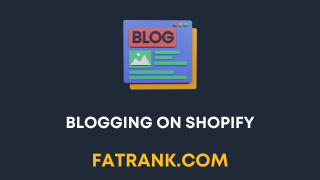
- Can you change the Shopify URL Structure?
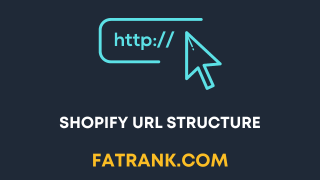
- Common Shopify SEO Issues
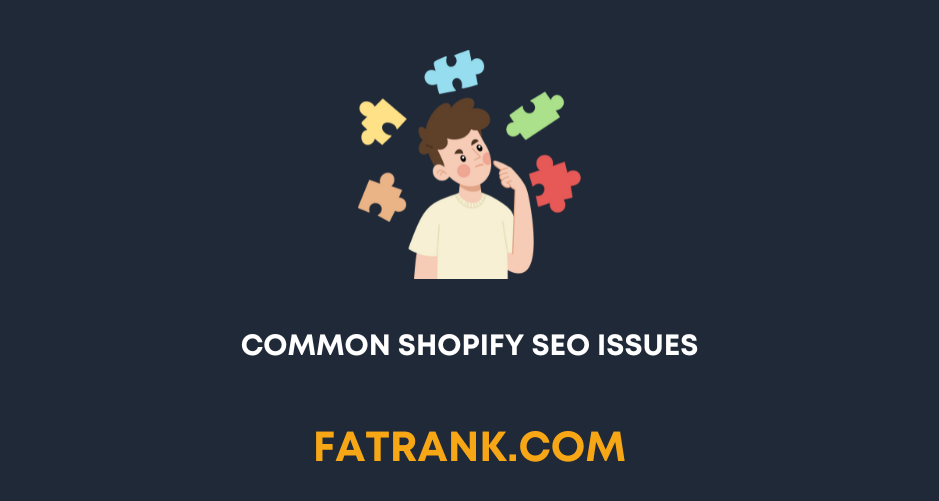
- Does Changing the Shopify Store Name Affect SEO
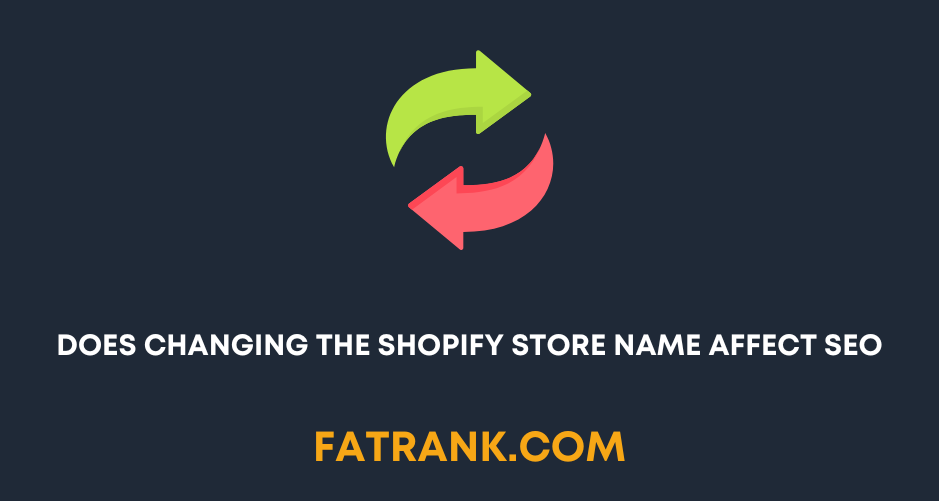
- Guide On Using Metafields In Shopify

- How Much Does Shopify SEO Cost

- How To Add Content To Shopify Collection Pages

- How To Add Keywords To Your Shopify Store For SEO
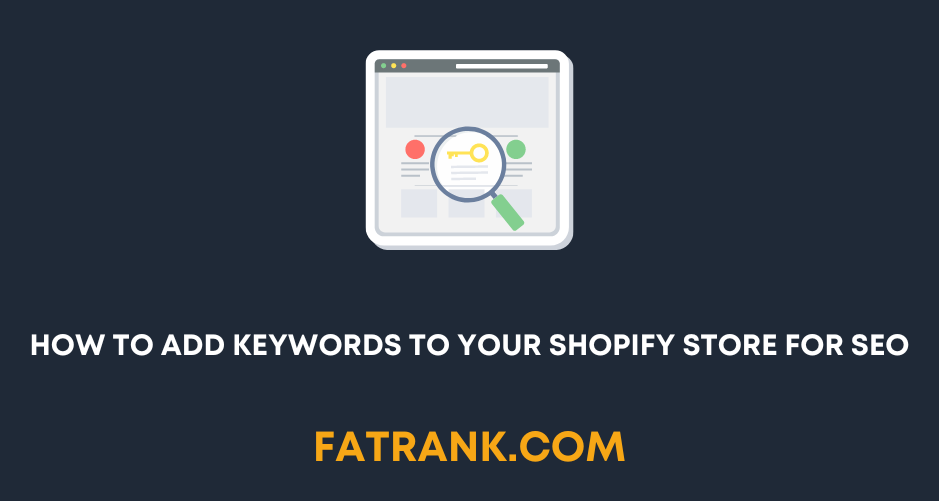
- How To Remove Duplicate Titles From Shopify Store
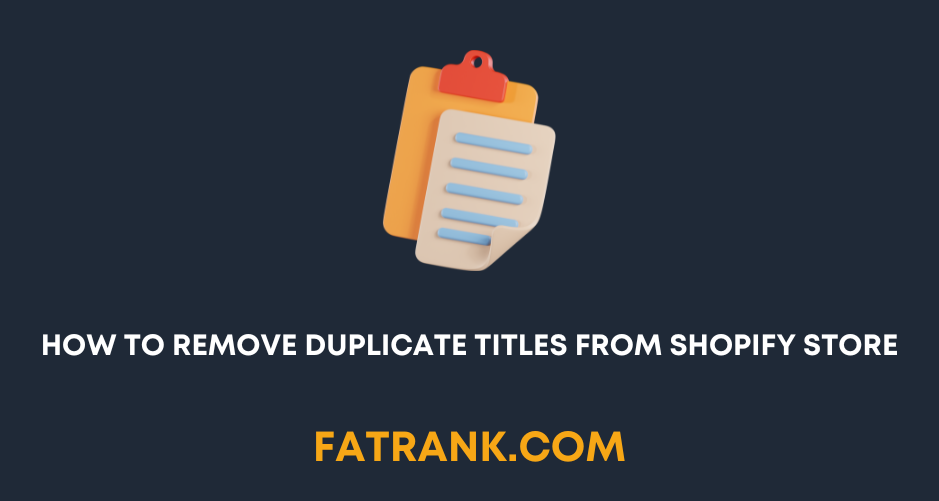
- How to Set up Multiple Shopify Stores Under One Domain

- Improving Search in Shopify Plus
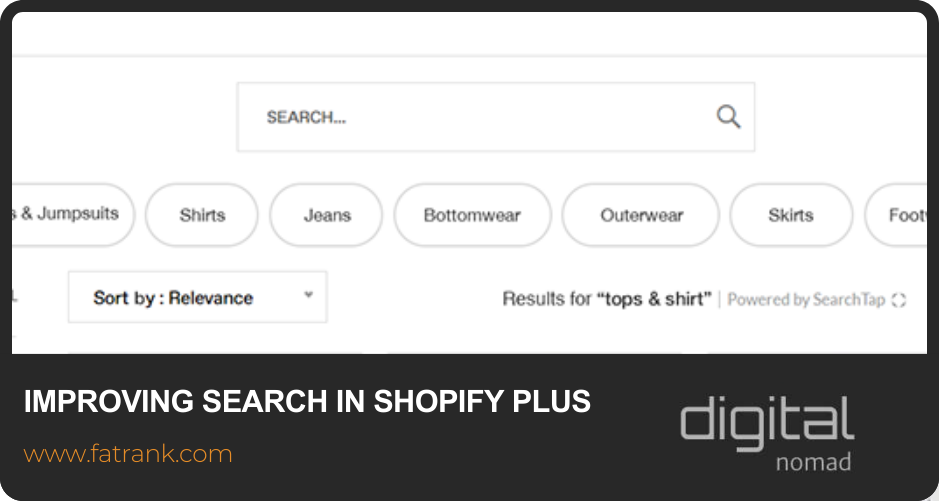
- Is Shopify bad for SEO? A Detailed Review
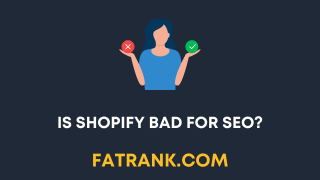
- Keyword Research for Shopify Stores
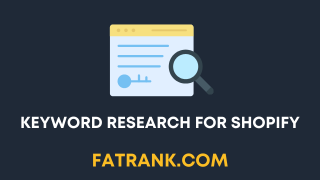
- Link Building for Shopify: Full Tutorial
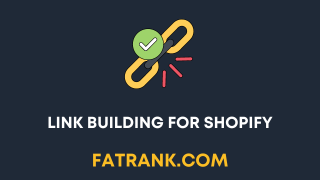
- Shopify Breadcrumbs SEO Issues

- Shopify Collection Page SEO: The Definitive Guide

- Shopify Image Optimization: Speed & SEO Guide
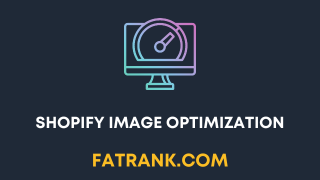
- Shopify International: Multi-Currency & Multilingual Setup
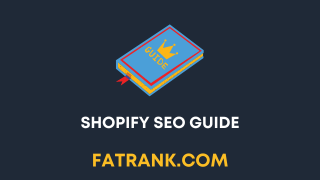
- Shopify On Page SEO Tutorial
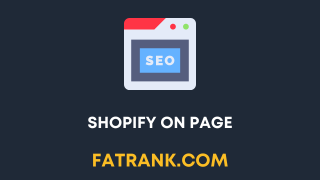
- Shopify Plus SEO

- Shopify Plus SEO: Potential Limitations

- Shopify Product Tags SEO: Why It's Bad & How To Fix It
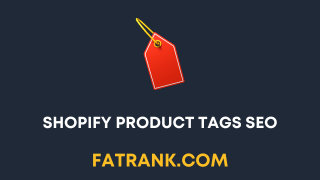
- Shopify Rich Snippets Tutorial: No App Needed

- Shopify SEO Agency
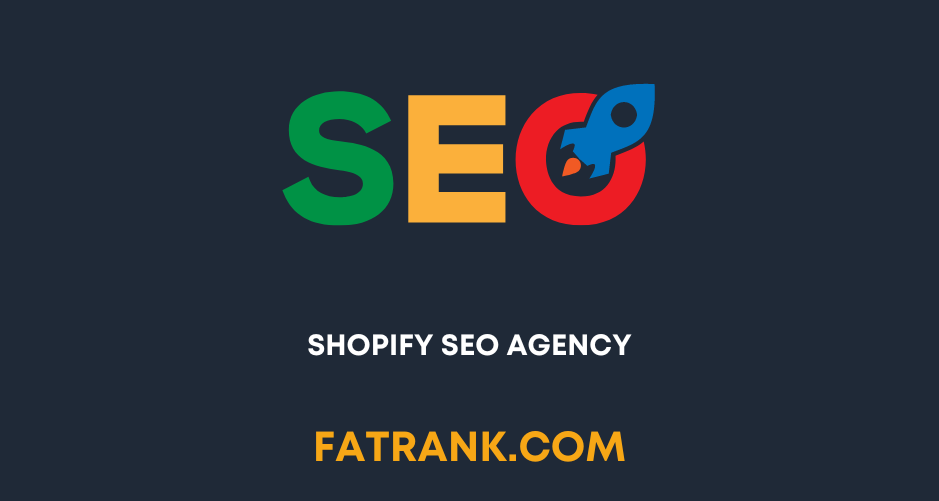
- Shopify SEO Case Study

- Shopify SEO Checklist
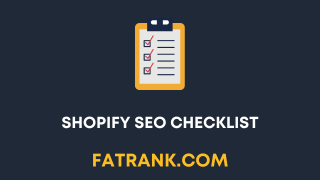
- Shopify SEO: The Definitive Guide
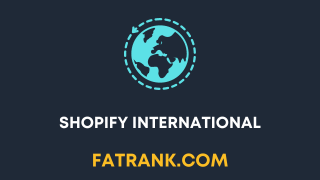
- Shopify Sitemap: Find & Submit Your XML Sitemap to Google

- Shopify Speed Optimization Guide
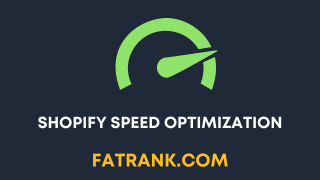
- Technical SEO for Shopify
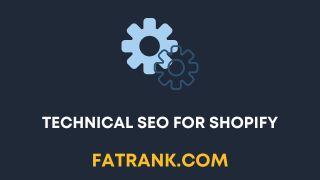
- Why Is No One Buying From My Shopify Store
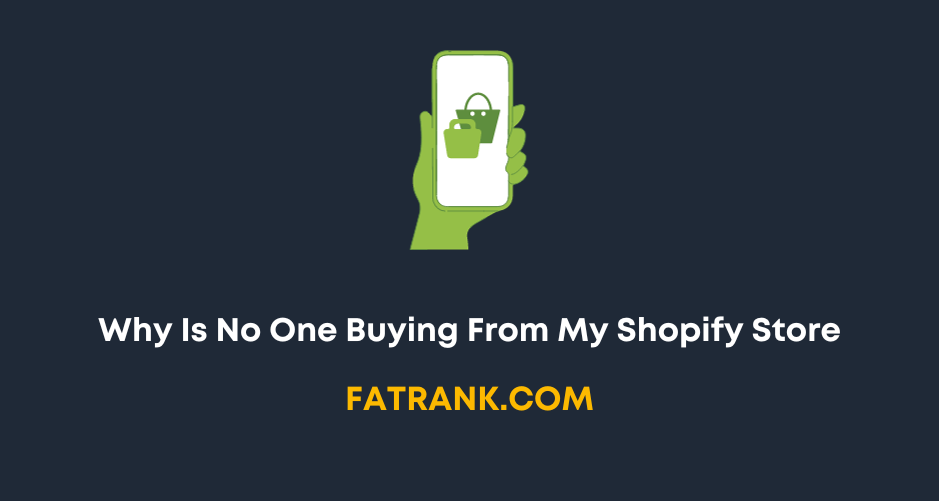
- Workarounds for the Shopify Variants Limit


About FatRank
Our aim to explain and educate from a basic level to an advanced on SEO and Social Media Marketing.
